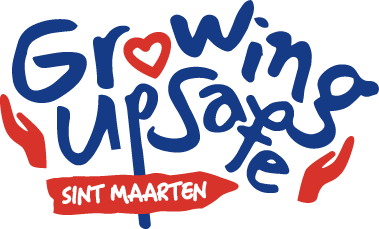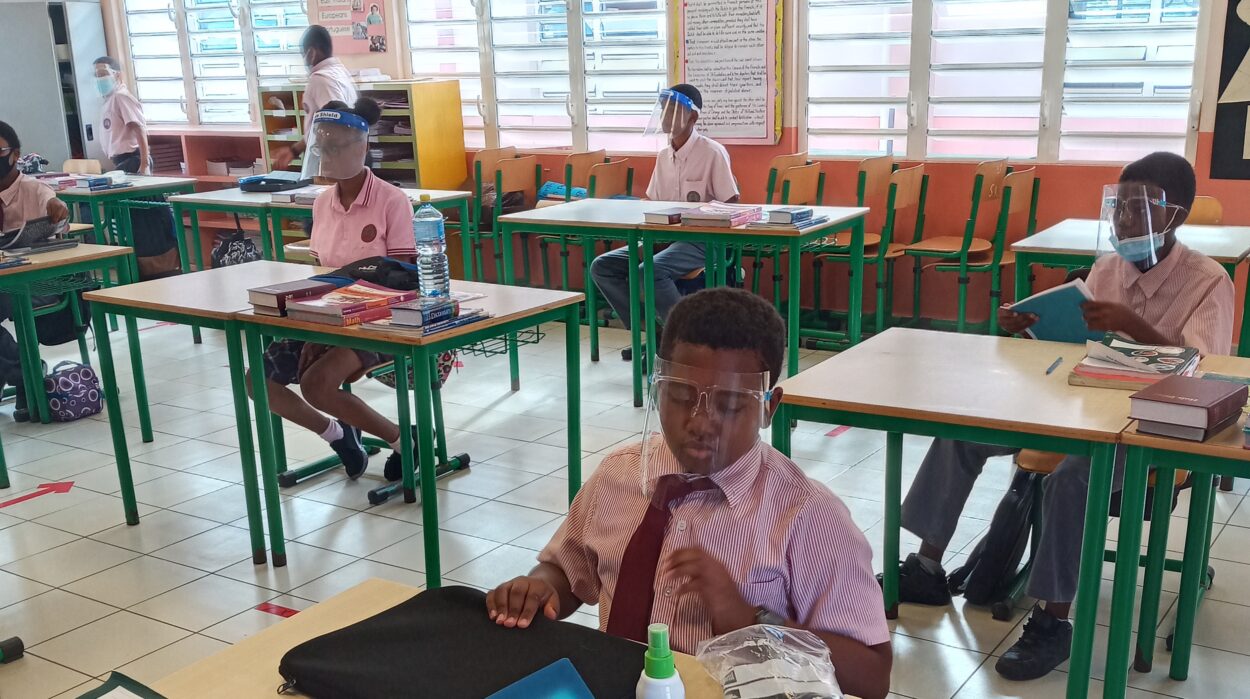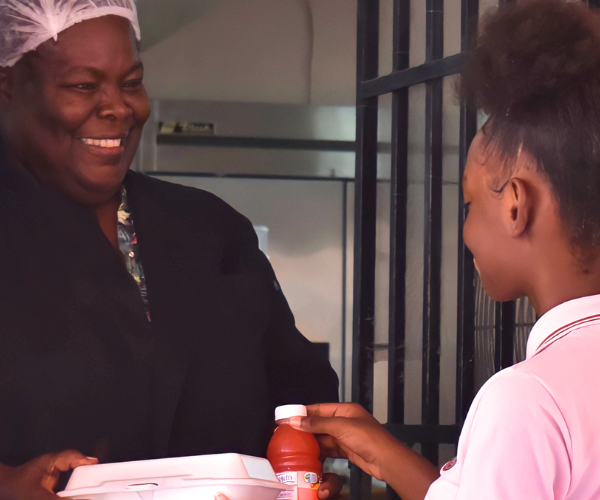“Our School Safety Team doesn’t just prepare our school for disasters; we look after the general wellbeing of our children daily”

Vera Illidge, Vice Principal of the Seventh Day Adventist (SDA) Primary School, has worn many ‘educational hats’ in her more than thirty-year career. Still, she admits that she will always primarily be a classroom teacher: “I love working with children and helping people elevate themselves. As a teacher, you can guide students and help parents see their potential too.”
Safety and Emergency Response Guidelines for Schools
In 2018, the Ministry of Education, Culture, Youth and Sport (MECYS) developed the “Safety and Emergency Response Guidelines for Schools” with the support of UNICEF The Netherlands. This document provides guidance for disaster and emergency safety planning in schools, emphasising the work to be carried out by the Safety and Emergency Teams (SETs). It also outlines the dos and don’ts before and during emergencies, suggesting possible steps for various hazards. SETs went on to draft their school safety and emergency plans under the guidance of the Student Support Services Division (SSSD) and with the support of UNICEF The Netherlands.
Each school can appoint their own SET Members. For example, at the SDA School, the SET includes the school’s principal, vice principal, student care coordinators, school counsellor, gym teacher, maintenance personnel, security guard and the board’s secretary. This year, between July and 21st August, the SET’s will receive additional training. At the end of the training, participants will be able to recognise the importance of school safety; differentiate the concepts of hazards, vulnerability, risk and resources as they relate to disaster risk management; apply digital tools to assess school safety for a given facility, and develop or update a School Safety and Emergency Plan.
Supporting your colleagues
The SDA is a primary school with approximately 340 students aged 6 to 12. The staff has had several tumultuous years due to Hurricane Irma and the COVID-19 pandemic. “I couldn’t live in my home for two years. Some of our staff lost everything due to the hurricane. Our school also had significant damage.” Vera tries to maintain an ‘open door’ policy so that her colleagues can share their concerns. “As colleagues, we listen to each other and try to motivate each other during stressful times. I am fortunate to have caring friends and family. My trust in God also helps me a lot.”
Practice drills
When it comes to hurricane preparedness, the school is proactive about informing students. “Hurricane Luis in 1995 opened our eyes. In response, we made a lot of changes, which included hurricane preparedness in our curriculum. All our students learn about hurricanes and how to prepare for them. They also have to do projects and presentations related to this topic.”
All students also participate in emergency drills. During the drills, the whole school acts out an emergency situation during which the school must be evacuated. Vera admits that during the pandemic, the school has not held its usual ‘practice drills’. This time, the students and staff have had to adjust to a different type of disaster preparedness.
“During the drills, the whole school acts out an emergency situation during which the school must be evacuated”
Access to the internet
“We all had to adjust during the pandemic. This was quite a challenge, and it does ask a lot of additional work from our teachers”, says Vera. Like most other schools, the SDA was asked to swiftly implement online classes once a lockdown became imminent in March 2020.
“In addition to the challenges of providing online learning and keeping students focused, some of our students also did not have proper devices or access to the internet”, Vera says. With help from the Government, donations from a hotel, and help from the school board, students were provided with computers or iPads. “I also know that teachers helped pay for some mobile data, for some of our students in need.”
Practice and repeat
To reopen the school, the SET needed to ensure that the school and staff could adhere to several Government regulations in efforts to provide a COVID-19 safe environment. “This takes a lot of logistics. Students from various grades enter and exit the school from different locations and at different times. Every grade has separate recesses, and lunches are delivered to classes, etc.”
“Understanding why they should do something will motivate students to learn how to do these tasks”
Students, staff and visitors also wear masks, practice social distancing and are temperature checked upon entry. “When it comes to children, you have to practice and repeat a lot. This way, they get used to the new rules, and they slowly become habits.” She also shares that it is important to teach students the relevance of their work. “Understanding why they should do something will motivate them to learn how to do these tasks.”
Children should feel safe
In the wake of both disasters, the SDA’s staff saw first-hand how families were impacted. Unemployment remains a big challenge for families. With help from the kitchen staff and their churches’ community outreach, the school helped provide meals, groceries, clothing or other support. Vera: “We don’t just help our students, but we aim to support their families and the wider community as well.”
In addition, Vera also touches on the importance of emotionally supporting students: “Children need to feel safe and comfortable to express their emotions. And if they don’t know how to express themselves verbally, you can see in their behaviour if something is wrong. It is not just the SET’s job, but our whole school gets involved when it comes to the wellbeing of our students.”



